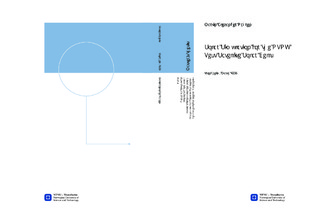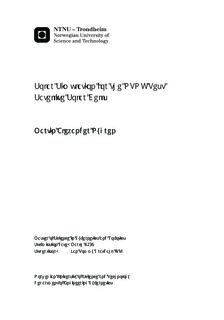| dc.contributor.advisor | Gravdahl, Jan Tommy | nb_NO |
| dc.contributor.author | Nygren, Martin Alexander | nb_NO |
| dc.date.accessioned | 2014-12-19T14:08:50Z | |
| dc.date.available | 2014-12-19T14:08:50Z | |
| dc.date.created | 2014-04-04 | nb_NO |
| dc.date.issued | 2014 | nb_NO |
| dc.identifier | 710209 | nb_NO |
| dc.identifier | ntnudaim:10512 | nb_NO |
| dc.identifier.uri | http://hdl.handle.net/11250/261144 | |
| dc.description.abstract | The relevant energy theory behind intensity and spectral irradiance from the sun is discussed with regard to how it changes due to factors like Earth-Sun distance, solid angle of the sun disk and circumsolar region, angle of incidence and atmospheric mass. This translates to how the experienced conditions for solar cells vary, how and why solar simulation is done the way it is with such stringent requirements, as well as what can be expected in terms of difference between controlled, fixed conditions and operation in environments where we are not free to modify the variables as easily. The most essential theory of solar cell structure and performance is reviewed, with emphasis on the theory needed to understand the design principles, characteristics and behavior of the high-efficiency multijunction solar cells available for the NUTS project. The most commonly encountered components of a solar simulator is discussed to the point where the information provided should allow for a well-informed evaluation and selection of design for most applications, and be of guidance if one were to wish to attempt to create a device able to simulate aspects of the solar irradiation.Solar cell characteristics are developed by the use of a solar simulator under controlled testing conditions to ensure reproducible results. The effect of controlled sunlight from a range of different angles onto a solar cell is investigated in terms of current-voltage characteristics, and in particular the effect on short circuit current as compared to what is expected of theory. It is found that the angle of incidence of light can be calculated from the measured current with a general accuracy of about 1 degree, when compensating for reflectivity in the solar cell cover glass. | nb_NO |
| dc.language | eng | nb_NO |
| dc.publisher | Institutt for teknisk kybernetikk | nb_NO |
| dc.title | Solar Simulation for the NTNU Test Satellite Solar Cells | nb_NO |
| dc.type | Master thesis | nb_NO |
| dc.source.pagenumber | 133 | nb_NO |
| dc.contributor.department | Norges teknisk-naturvitenskapelige universitet, Fakultet for informasjonsteknologi, matematikk og elektroteknikk, Institutt for teknisk kybernetikk | nb_NO |

